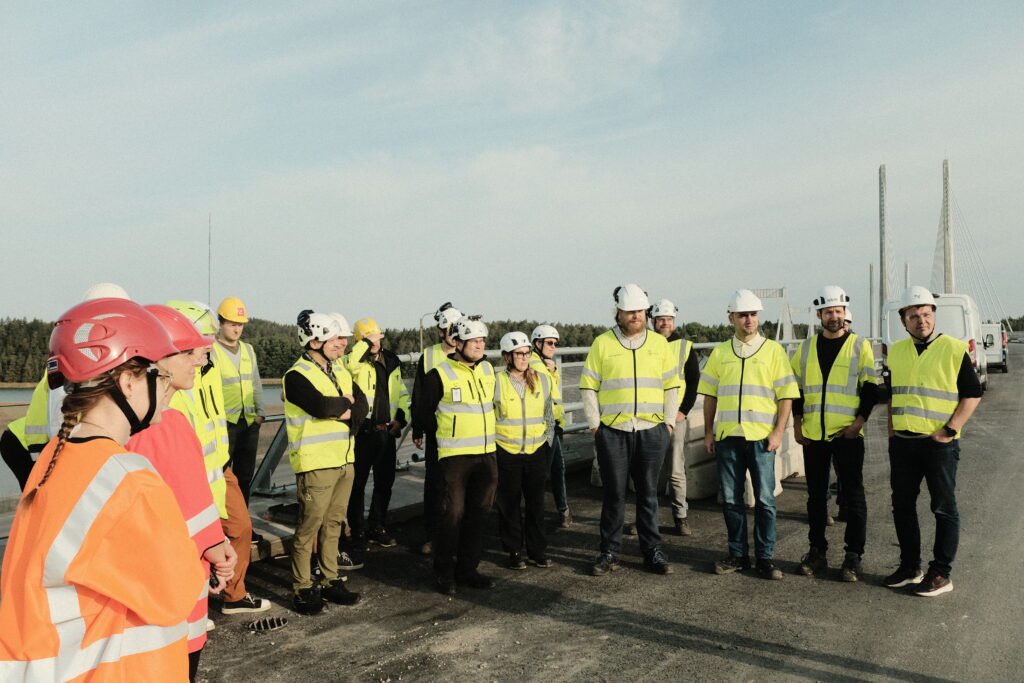The NVF Bridges Seminar 2025 was held in Turku, Finland on 10–11 September. Experts from across the Nordic region gathered to exchange knowledge and share best practices on sustainable bridge engineering. The seminar combined technical presentations, discussions and site visits, including both older and modern bridge structures in Turku. There were in total 23 participants who had the chance to get to know each other during the social gatherings.
Presentations highlighted:
- How can Trafikverket reduce environmental impact and carbon footprint using contract requirements? presented by Jacob Vennberg, Trafikverket (Sweden)
- Advanced structural assessment of existing bridges – economic optimisation and documented safety, presented by Frederik Autrup, Rambøll (Denmark)
- Challenges with reuse of bridge components, presented by Andri Gunnarsson, EFLA (Iceland)
- Construction and lifecycle emissions of small concrete bridges according to Väylävirasto’s typical designs for frame and slab bridges (bridge length <25 metres), presented by Kasperi Pirttikoski, Ramboll (Finland)
- Portfolio management for better sustainability, presented by Arianna Minoretti, NPRA (Norway)
- LOKI – Icelandic CO₂ calculator for infrastructure projects. Introduction to the tool and the Icelandic Road and Coastal Administration’s goals for implementation, presented by Andri Gunnarsson, EFLA, and Guðmundur Valur Guðmundsson, Vegagerðin (Iceland)
- Hessundinsalmi bridge (>100m concrete frame with concrete hinge), presented by Atte Mikkonen, Sofin Consulting (Finland)
- Terminal care of the old Kirjalansalmi bridge, presented by Heikki Lilja, Heikki Lilja Consulting (Finland)
- Overall presentation of the excursion site and bridges, presented by Rasmus Sainmaa, Kreate (Finland)
By bringing experts from different countries and sectors together, NVF’s bridge community allows sharing solutions and views on common issues the Nordic countries share. This exchange of knowledge strengthens our ability to design and maintain resilient, sustainable bridges for the future.

